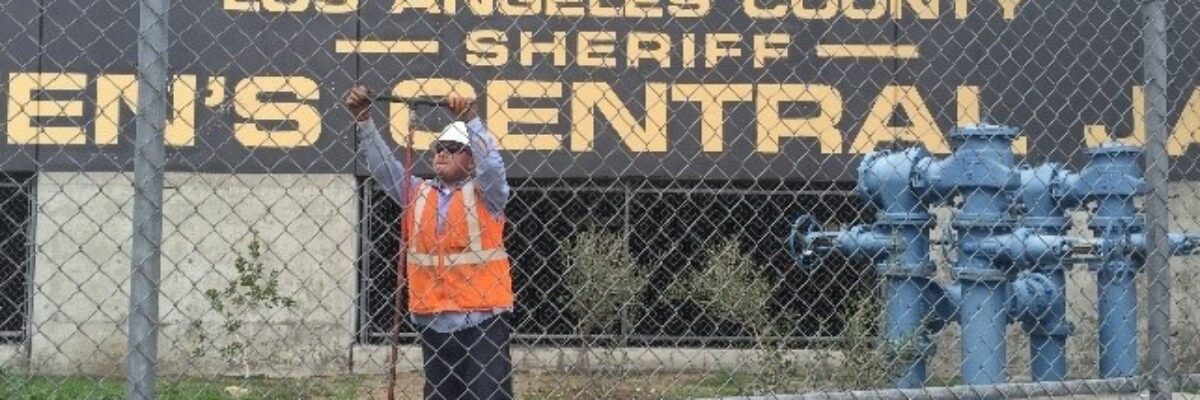The Men’s Central Jail site assessment projects were awarded to NV5 under the existing As-Needed Environmental Assessment and Remediation Services Contract No. PW13510. Since 2014, NV5 has conducted a $339,676 site assessment of the 18-acre LA County Men’s Central Jail facility and two satellite properties. Scopes of work included multiple -compliant Phase I and Phase II Environmental Site Assessments (ESAs), a comprehensive Hazardous Building Materials Survey and a Human Health Risk Assessment. The investigation was the first phase of a feasibility study and enabling project for the demolition, site prep and construction of a new modern facility with an overall project value estimated to be close to $2 billion. NV5’s team continues to support this project by providing on-going support as the overall project progresses. To date, NV5 has completed the following work:
Phase I ESAs
ASTM E1527-13 compliant Phase I ESAs were conducted for two off-site properties to assess feasibility for parking expansion projects and for the Men’s Central Jail complex to identify potential areas of concern which may impact future construction activities. Through the course of the Phase I ESAs, NV5 identified multiple off-site and on-site potential concerns, including former industrial site uses, former and existing Underground Storage Tanks (USTs) and off-site releases potentially impacting the subject property. NV5 worked directly with the client to assess the significance of each identified potential concern and to develop work plans for further assessment.
Phase II ESA
Based on the findings of the Phase I ESAs, NV5 developed a Phase II ESA work plan in consultation with the client to investigate identified areas of potential concern. Field activities were conducted within the jail facility itself and within ancillary support areas.
Prior to any intrusive activities, geophysical surveys were conducted to locate detectable underground utilities and buried features of interest, as well as to clear the marked boring locations prior to future drilling and soil sampling activities. Several geophysical methods and equipment were employed, including an EM-61 high sensitivity metal detector, an EM-31 short terrain conductivity meter, a Ground Penetrating Radar unit coupled with a 500-MHz antenna, a shallow-focus conductivity meter (M-scope) and other electromagnetic utility-locating equipment. Detectable horizontal surface traces of piping, utilities and anomalies were marked on the ground with paint in a color code established by the American Public Works Association.
Following the geophysical survey, investigation activities included the advancement of over 40 borings to facilitate soil, soil vapor and groundwater sampling. The initial five feet of every boring was manually drilled utilizing a hand-auger to mitigate potential conflicts with unidentified subsurface utilities or other obstructions. Beneath five feet, borings were advanced with direct-push drilling rigs to depths ranging from 7 to 40 feet below grade. Collected soil and groundwater samples were variously analyzed for Title 22 metals, Volatile Organic Compounds (VOCs) and Total Petroleum Hydrocarbons (TPH). Following soil sampling, over 30 of the borings were converted to soil vapor sampling wells. Soil vapor samples were collected and analyzed in accordance with the Department of Toxic Substances Control / Regional Water Quality Control Board (DTSC/RWQCB) 2013 Advisory for Active Soil Vapor Investigations. During the course of these Phase II ESAs, NV5 identified multiple areas of potential concern for future site users and for construction workers.
Human Health Risk Assessment
Based on the findings of our Phase II ESA for the Men’s Central Jail complex, NV5 developed a Human Health Risk Assessment (HHRA) to investigate the significance of identified potential environmental concerns. The HHRA assessed human exposure to chemical residue by utilizing standard equations and methods developed by the United States Environmental Protection Agency (USEPA) and the California Environmental Protection Agency for similar exposure conditions. Site-specific information regarding land use and receptors was used to quantify exposures to the media of concern. A fate and transport assessment was performed concurrent with the risk assessment. The fate and transport model was conducted to assess whether VOCs detected in soil gas are likely to impact indoor air quality, as well as the degree and magnitude (if any) of such potential impacts.
Hazardous Building Materials Survey
NV5 also conducted a comprehensive Hazardous Building Materials Survey of the Men’s Central Jail complex. The survey included visual assessment and identification of suspect materials, field screening utilizing an x-ray florescence (XRF) instrument and the collection of samples for laboratory analysis. During the survey, over 1,300 asbestos samples were collected, over 1,700 XRF readings were collected and over 500 paint chip samples were collected. Based on the findings of the survey, NV5 developed general abatement plans for mitigating potential exposure to hazardous building materials during construction and by future site users.
Outcomes: NV5’s team of in-house site assessment and investigation specialists and a number of subcontractors — including Risk Assessors, drillers, coring companies, underground utility location services and multiple laboratories — have successfully delivered each segment of this project on-time and on budget. The project is a highly public and sensitive project with high level political involvement. NV5’s team works closely with the Los Angeles Department of Water and Power (LADWP) management and a cadre of design, planning and engineering firms to provide responsive and valued service. Completing a project in this environment has been extremely challenging due to site restrictions, safety and security concerns, multiple levels of management and coordination for approvals, fluid schedules and working with multiple stakeholders. With the right leadership and team in place, NV5 has provided the LADPW with exceptional value.


